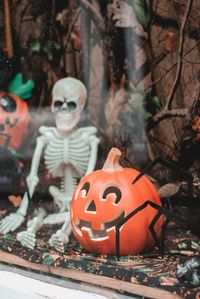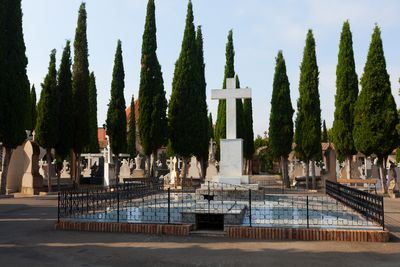Halloween
PODCAST: read and listen to this entry at the same time (you can find the Spanish text here)
Halloween is not a Spanish celebration, it came to us from the United States. In the last years it has become very popular in Spain and little children celebrate it in school with lots of enthusiasm. Adults celebrate it as well with even more exhilaration.
Halloween is an English word that in Spanish stays exactly the same. It translates to “víspera del Día de Todos los Santos” (All Hallows’ Eve). Halloween brought us new traditions as well as new vocabulary.

Nowadays, lots of children in Spain go with their parents for the traditional trick or treat, which we call here “truco o trato”. Not everybody does this. However, it becomes each time more popular.
In the afternoon, after school, we go for a walk, and stop at the shops so the children can “trick or treat” and obtain sweets. Of course they are dressed up as scary characters.
Since they can go to school dressed up because they usually have planned special activities related to Halloween, in general, they wear their (1) costume during the whole day. Naturally on this day you can see lots of (2) zombies, (3) witches, (4) skeletons, (5) ghosts, etc. In regard to sweets, Halloween has brought as traditions like cupcakes and other decorated sweets as well as preparing terrifying lunches, drinks and dinners in bars and restaurants. That’s because when the sun goes down, adults go out to celebrate, too. They dress up just like the little ones but instead of going for trick or treat they typically go out for dinner and afterwards drinks. Naturally, they are equally terrifying!
Día de Todos los Santos

On the day after it’s November 1 and we change to a real traditional festivity in Spain. Every year on November 1 we celebrate All Saints’ Day. It’s a (6) bank holiday in all of Spain, i.e. a national bank holiday and there’s no school, you don’t go to work and pretty much everything is closed except bars and restaurants.
What do we celebrate on this day? Who are the Saints? November 1 is a day to especially commemorate those persons that have died, the (7) deceased. It’s a Christian and Catholic holiday that is very deeply rooted in Spain.
What do we actually do on this day? Well, on November 1 it’s customary to go to the (8) cemetery to “visit” your loved ones, lay down some flowers on their graves and spend time with your family. The cemeteries are open all day long and full of people of all ages including families with children. On this day the cemeteries are filled with pretty and colorful flowers. But people don’t visit the cemeteries just on November 1 but also during the whole previous week in order to clean and decorate the (9) tombstones for this special day.
Watch out! Don’t mix up this holiday with the Día de Muertos (Day of the Dead). That one is a traditional Mexican holiday with its own traditions and customs.
All Saints’ Day is a holiday you usually spend with your family. Therefore, we normally have lunch together. Among the many dishes, what stands out is the huge amount of traditional pastries: Bones of the Saint (huesos de santo), Nun’s puffs (buñuelos de viento), French toast (torrijas), fried milk (leche frita), deep-fried dough (pestiños), etc. If you feel like trying Spanish Nun’s puffs, here’s the blog entry with the recipe.
Did you already know these festivities?
VOCABULARY
- costume: disfraz; ropa para simular una persona o personaje distinto.
- zombie: zombi; persona muerta que revive por algún tipo de encanto.
- witch: bruja; son personas que tienen poderes y pueden hacer encantos y hechizos. Suelen llevar gorros de punta.
- skeleton: esqueleto; la parte del cuerpo formada por huesos.
- ghost: fantasma; es el espíritu de una persona muerta.
- bank holiday: festivo; día que oficialmente no se trabaja o se va a la escuela. Es un día oficial de descanso, normalmente debido a una celebración.
- deceased: difunto; es como se denomina a una persona muerta.
- cemetery: cementerio; es el lugar donde enterramos a las personas que han muerto.
- tombstone: lápida; generalmente es una piedra natural donde escribimos el nombre de la persona que ha muerto. Se pone en el cementerio.
Interactive exercises
Credits:
Featured image: dl Spanish lessons
Picture 1: Photo by Hello I’m Nik 🎞 on Unsplash
Picture 2: Image by bearfoots on Freepik
